- TOP
- Ecomone Products
- Key Points of Insect Management
Key Points of Insect Management
Here are some tips for effective pest management to protect the valuable things of customers
Importance of monitoring in conducting Pest Management
Do you think pest management is required?
Generally, insects have a strong reproductive capacity and even a small amount of food can cause an immense increase in number of insects in a very short period of time. These insects are difficult to find because of their small size and the fact that they nest in human blind spots or hide among food. Due to this reason, the pest management control method is conducted only after the emerge of insects, which is often regarded as quite late. To prevent such delays, the pest control must be implemented at right time, at right location, and in right way.
How does the monitoring effectively supports pest management?
Monitoring generally means “to observe” and “to visualize” the outbreaks of insects in various situations. It is very important to visualize the infestation situation of insect, taking early preventive measures and after that, confirming the effectiveness of applied preventive measures. This is a series of general procedures of pest control. During this process of monitoring, the pheromone trap of FUJI FLAVOR acts as one of the supportive tool for a good pest management routine by providing solid data for making a pest control strategy and checking the success and failure of control measures.
What Pheromone Traps can do, in terms of monitoring?
It is helpful to acquire the following information:
- Identification of insect species
- Identification of status of habitat of insect
- Identification of timing of infestation and internal development (in factories, warehouse) of insect
- Identification of location of infestation and internal development(in factories, warehouse) of insect
01Forecasting timing of occurrences and discovery of early outbreak of insects
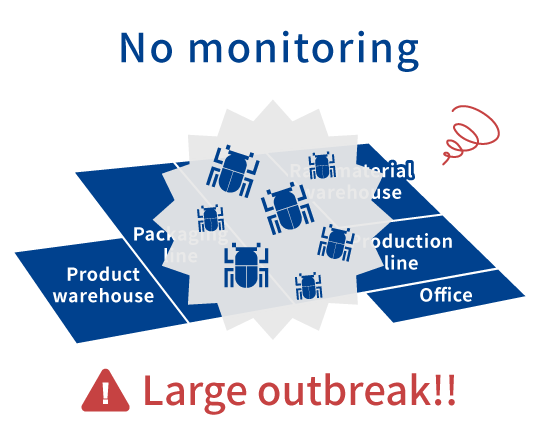
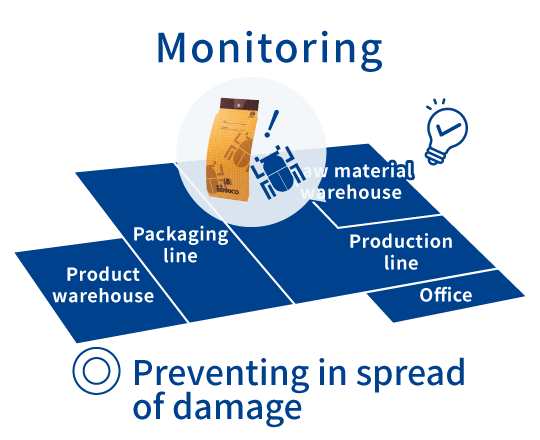
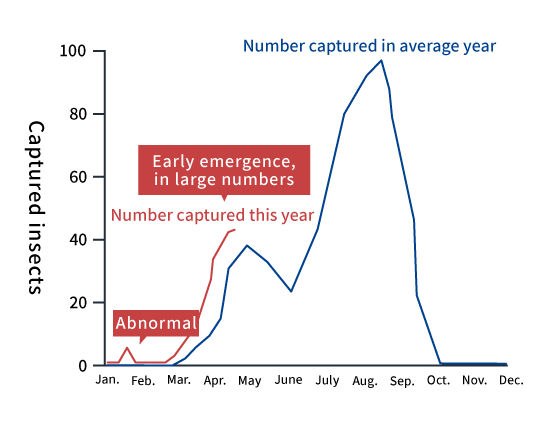
02Understanding distribution of target insects
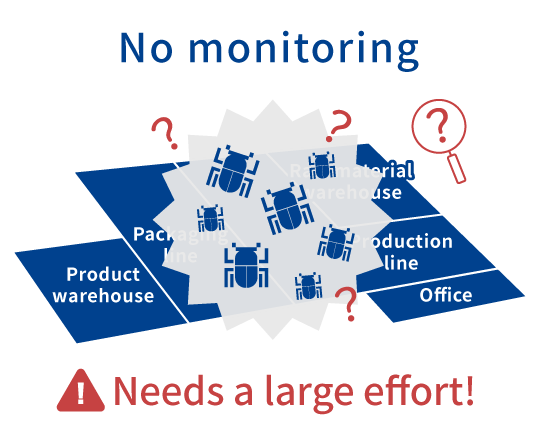
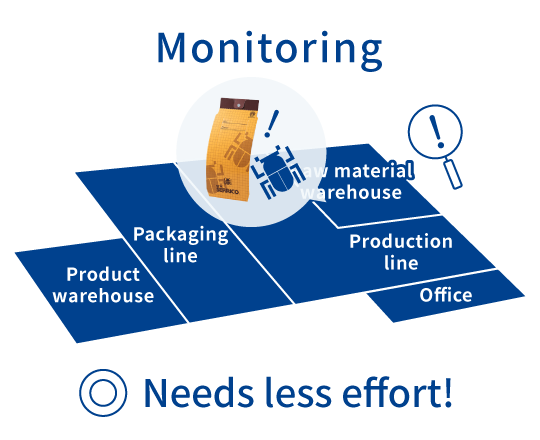
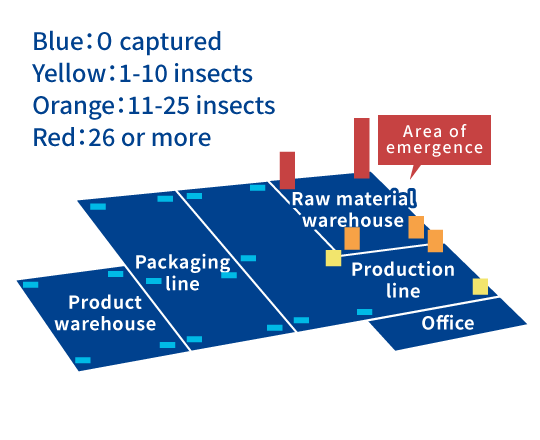
03Checking the effectiveness of pest control method through comparison of data
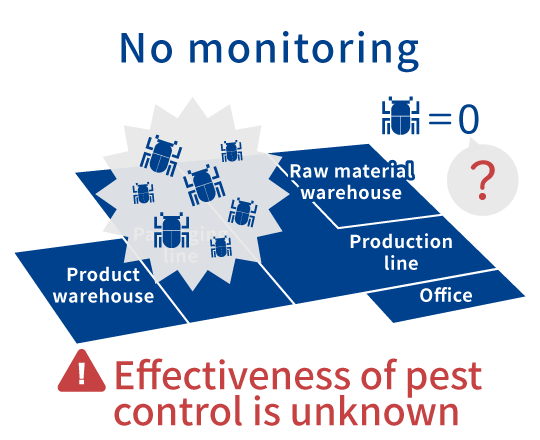
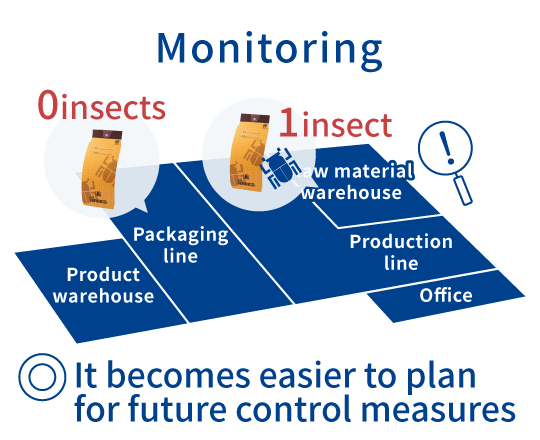
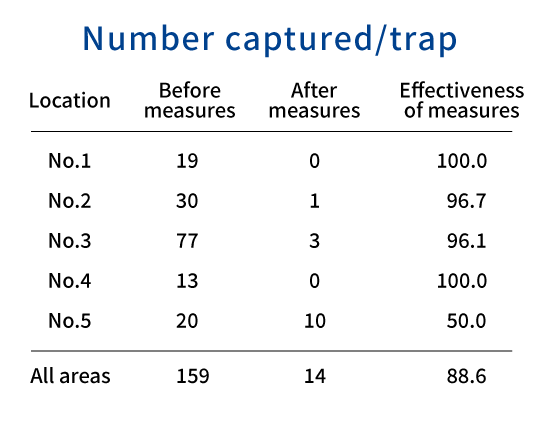
Key points to install pheromone trap
It is possible to accurately identify the risk of insect and compare the data by understanding the key points below.
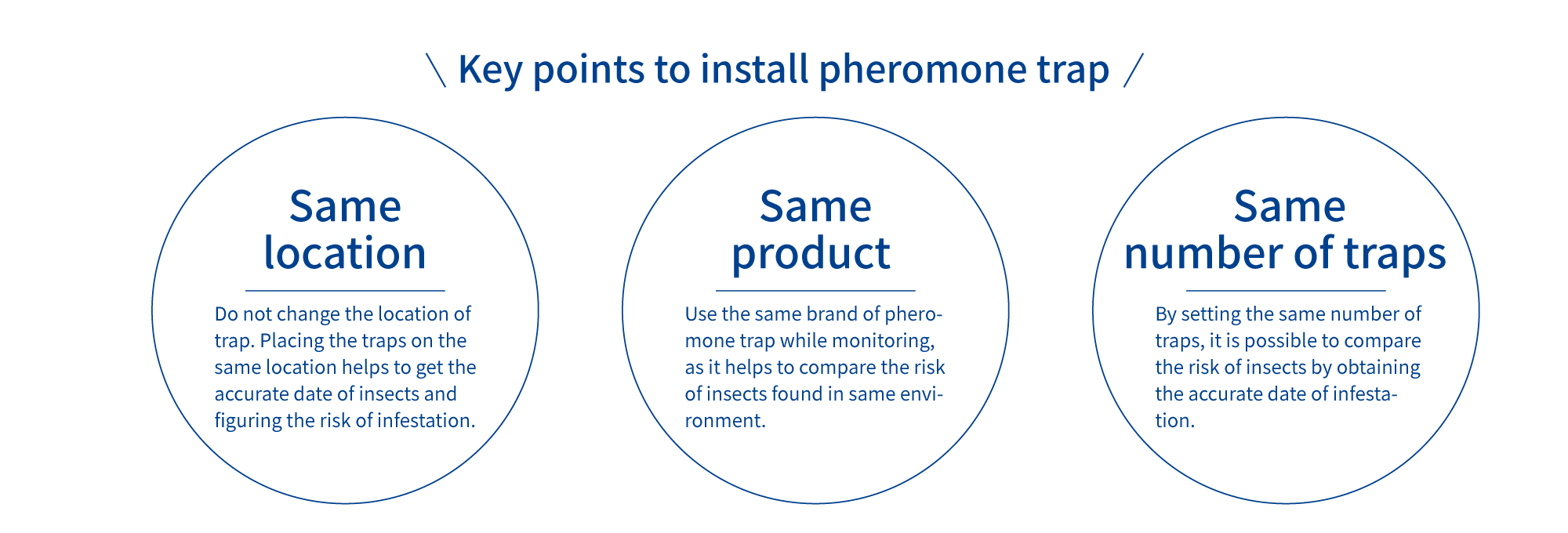
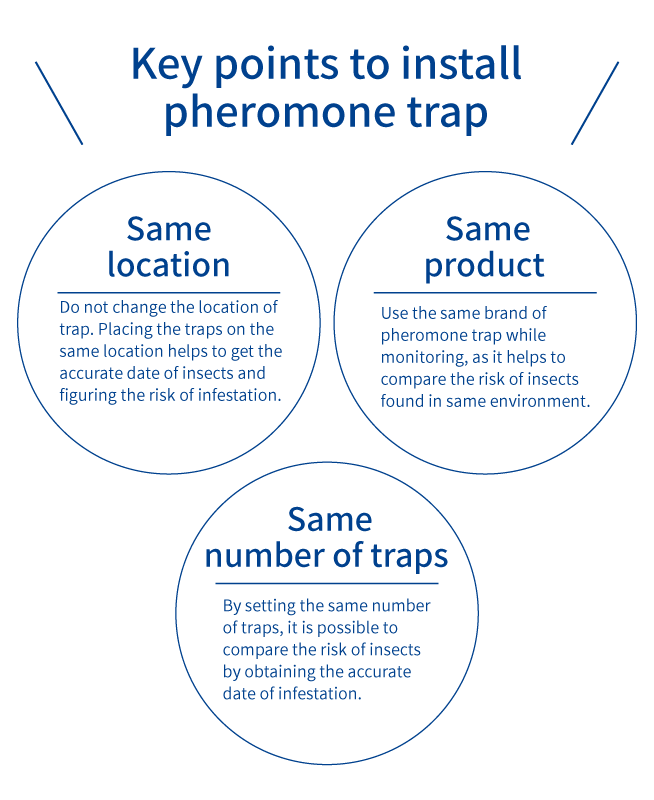
Installation Examples
Click the image to see the details of installation method of pheromone trap
Tap the image to see the details of installation method of pheromone trap
